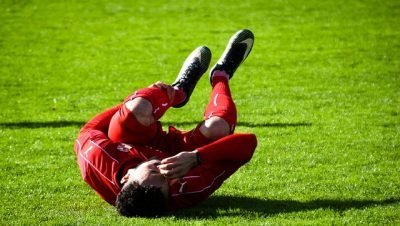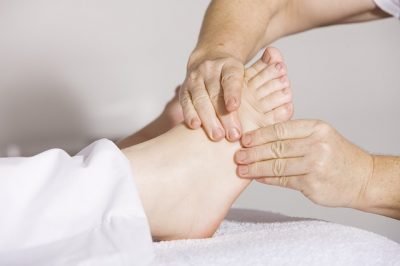Be it because of sports, a misstep going down the stairs or an abrupt pull that strains your back, a torn muscle or dislocated joint is an invitation to a world of pain and inconvenience, sometimes keeping us from carrying out simple, everyday activities like walking or sitting up without experiencing excruciating pain. Bracing for injury rehabilitation, or therapeutic bracing, is more often than not an integral part in the business of recovering from a ligament or joint injury, broadly described as musculoskeletal injuries. The right brace gives the injured area the proper support to help us move without exerting the area or injuring it further, keeping it stable so it has a chance to heal, keeping the swelling down and making the pain more bearable.
A brace’s effectiveness depends partly on the type and severity of injury it’s treating, the type of brace being used, and also exactly what’s been injured. Typically, for contact sports like soccer, knee and ankle injuries are the most common, while some of us experience back pains either from conditions like sciatica, or pulled muscles from trying to yank open a fast-jammed door. In any case, how therapeutic bracing works for different types of injuries will vary – in this post, we’re going to examine a few of the most common ones.
Knees

If you’re an athlete, be it professionally or casually, a knee injury is pretty much an ever-present risk, but understanding how bracing can help recover and even prevent such injuries involves delving into the anatomy of it. Around the knee joint, injuries typically occur to the Medial Collateral Ligament (MCL), Lateral Collateral Ligament (LCL) and Anterior Cruciate Ligament (ACL). Keeping it simple, the MCL and LCL help keep the knee joint from overextending from one side to another – the MCL, on the inner side of your knee connecting your thigh bone to your shin bone, keeps your knee from bending inwards, while the LCL, on the outer side and connecting your thigh bone to the fibula in your lower leg, provides your outer knee stability. ACL injuries, on the other hand, tend to occur because of the shock of a sudden stop or turn, and refer to tears or damage to the ligament dedicated to stabilizing your knee joint, stretching from the thigh bone to the shin bone.
A tear or damage to any of these ligaments can cause difficulty in standing or placing weight on the injured leg, instability when you’re trying to walk, swelling around the affected area, and more, depending on how severe the injury is. One thing that is certain, though, is that if not allowed to recover, you may wind up debilitating the sprain, jostling the knee around without the ligaments functional enough to protect it.
This is where bracing – custom selected for your knee and prescribed and approved by your doctor – comes in. The right brace can give your knee the support it’ll likely be missing, with the ligaments usually doing that job out of commission, at least for a while. But that’s not all – the support helps keep abrupt spasms and shocks to the injured area to a minimum by restricting movement, allowing the damage to be repaired without too much disruption. With the adequate bracing, you might even be able to resume athletic or other physical activities for less severe injuries, the brace making up for the lack of medial and lateral support your MCL and LCL would otherwise be giving you.
Having a brace on also helps with proprioception – the process by which a network of receptors around your joints makes sense of their position and movement. An injury to or around your joints generally means damage to the receptors, too, which throws off your understanding of what your joints are doing – a brace can alleviate that, creating an increased awareness of your joints and their movement, so you don’t accidentally jostle them or destabilise yourself.
Back

Back trouble could arise from awkward posture, the recurring strains of heavy-lifting or sudden muscle sprain, but whatever the case, a back brace can often provide external support to help manage the pain and aid recovery.
If you’re experiencing pain from displaced joints or disks in or around the spine, a brace helps by locking your spine into place, preventing any accidental slips or disturbances to the area, immobilizing it so it has a chance to heal. Braces also help divert the pressure focused around your spine and lower back for activities like lifting, or even simply sitting up from a reclining position, or getting to your feet. This not only makes movement easier and encourages recovery, but also alleviates the pain by limiting strain around the injury.
Back braces can also help correct or maintain your posture, which might be affected by a sprain or injury making it difficult to keep your spine properly aligned, and helps remedy postural problems which may have contributed to back pain in the first place.
Ankles & Feet

A common ankle injury is an inversion injury, where the ankle twists inward, causing soft tissue or ligament damage on the outside of your ankle. Typically occurring during sports or athletic activities, this type of sprain usually affects the Anterior Talo Fibular (ATF) ligament and may lead to swelling and/or bruising, making it difficult to place weight on your foot and walk properly. An ankle brace for this type of injury helps protect your outer ankle, stabilizing it with plastic or metal-based support to keep you from disrupting the area, distributing pressure and letting you limit movement so as not to exacerbate the injury further.
Braces can also make a marked difference for foot injuries like plantar fasciitis, a condition where the band of tissue running from your heel to the balls of your feet is damaged. This can make it excruciating to walk, as the contact of your sole to any surface adds pressure to the injured area, making it painful to rest your weight on your foot while standing or walking. Night splints can help if you suffer from this condition, by helping keep the plantar fascia and Achilles tendon stretched as you sleep to reduce the pain when your sole touches the ground again in the morning.